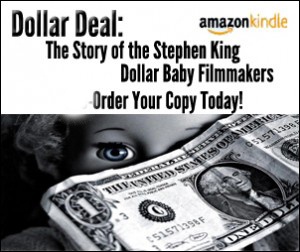On January 18, Richard Verrier of the LA Times reported that Paramount Pictures has ceased distributing movies on 35mm film. It seems Paramount has reconsidered this policy and is now making an exception. In a move that will likely inflate his ego, Christopher Nolan has been given a pass and has been approved to shoot & distribute on whatever format he prefers, whether it be 35mm or 65mm IMAX film. Nolan is well known in the industry and among his fans for self-aggrandizement by bragging about how, in this digital age, he continues to shoot and edit on film, making it clear in the end credits of his movies.
The change to a (nearly) all digital format has been slow going, but long overdue. As a technological medium, the upgrade was bound to happen sooner or later and as a study of movie history, it baffles me that it took as long as it has. Filmmakers tend to drag their heels when it means stepping away from a format they’ve worked their whole lives to have access to. Steven Spielberg once expressed his concern that he might never shoot 35mm film again as punishment for the failure of his 1979 war comedy, 1941.
“To me, the decline of film in the face of HiDef video is a non issue” says Sundance winning filmmaker Matthew Harrison, “At one time the state of the art for projected images were magic lanterns burning whale oil, but I don’t hear many voices crying out to bring that technology back. We move on.” Harrison, who has recently returned from jurying the narrative features at Slamdance added, “These past couple of weeks I witnessed a burgeoning output of original ways to exploit the new high definition technology. HiDef can do things film only dreamed of. I find it highly inspiring. We live in exciting times.”
Film has been the primary format for motion pictures for more than 120 years. While the move away from film has been cautious at best, the acceleration for an all out replacement at the industry level could only happen with a major studio like Paramount taking the first steps. Film is much more expensive to handle and movies shoots that roll on “celluloid” often require larger crews to accommodate the additional equipment that is often needed. “You have to light the sh*t out of it” says one filmmaker I spoke with in New York, “Digital technology has gotten to the point where you don’t need supplemental lighting to create a marketable image and you don’t need to worry about color balancing different film stocks in a skittish chemical process. To work in film you need lights, you need gear and the costs add up quickly. On top of that it’s just too risky, especially in the current economy.”
According to multiple sources, a little more than 92% of movie screens in the United States have already made the move to an all digital format. LA Times writer Richard Verrier believes that Paramount’s decision will likely “encourage other studios to follow suit”, thus “accelerating the phase-out” of 35mm film. Jan-Christopher Horak, the director of the UCLA Film & Television Archive, spoke with the LA Times saying, “It’s a huge significance because Paramount is the first studio to make this policy known.”






